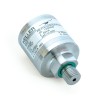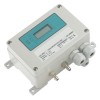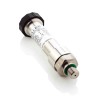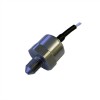Low range pressure measurement Universal Serial Bus (USB) interface computer connection sensing devices.
Products
 41X Low Range Digital Output Pressure Sensor - Low pressure sensor with a USB, RS232 or RS485 digital output interface for measuring low range gauge or differential pressures from 10 to 300 mbar.
41X Low Range Digital Output Pressure Sensor - Low pressure sensor with a USB, RS232 or RS485 digital output interface for measuring low range gauge or differential pressures from 10 to 300 mbar.
Related Product and Application Guides
 HVAC
HVAC Low Pressure Range
Low Pressure Range Digital Pressure Sensors
Digital Pressure Sensors Data Loggers
Data Loggers Pressure Transducers
Pressure Transducers Digital Interface
Digital Interface
Related Help Guides
Measuring low range pressures is typically necessary on systems that transport air or gases such as building ventilation and factory dust or fume extraction.
In order to move air or gas from one place to another, a differential pressure difference needs to be created which causes movement in the direction of higher to lower pressure. Only a relatively small difference in pressure is needed to create sufficient movement of air or gas, which is a good thing because too high a differential would cause problems with noise and opening of doors in a workplace environment.
The size of low pressure measuring devices tends to be larger than equivalent higher range ones, this is because lower pressures produce less deformation in the sensing material, and therefore a larger surface area is required to maintain sensitivity of measurement. A thinner material is also used, but this is often limited by the technology and strength of the active material.
Due to the larger surface area and thinner sensing material used in low pressure sensing devices, it is necessary to downgrade the accuracy performance compared to higher ranges, because they are more sensitive to external environmental influences such as vibration and temperature changes.
Pressure units which are used to describe low pressure ranges include pascals (Pa), millibars (mbar, mb), hectopascals (hPa) or inches of water column (inH2O, inWC, inWG, “H2O, “WC, “WG).
The Universal Serial Bus (USB) interface is a popular digital interface for quick and easy connection of measurement devices to desktop & laptop computers and other digital measurement instrumentation.
A USB connection provides a global standard for the physical electrical connection, communication and powering of digital sensors and measurement instruments. A single cable is used for sending all the read & write commands, and providing a low dc supply voltage.
USB is a popular method for connecting measurement devices together in a research laboratory environment on experimental test rigs, where all test equipment is close by on the same test bench or rig.
The majority of USB measurement devices come with application software which can be installed on a laptop or desktop computer. USB provides the user with a plug & play set-up that can be up and running very quickly without the need for wiring, separate power supplies or signal conditioning instrumentation.
Pressure sensors are measurement devices for detecting variations in pressure of liquids or gases. Typically a pressure sensor is made of two subcomponents, an electromechanical assembly on the frontend, and a signal conditioning module on the backend.
The frontend of the pressure sensor is connected directly via a thread or clamped seal to a pipe or vessel containing the liquid or gas to be measured. The pressure generated by the liquid or gas will apply a force to a sensitive exposed surface area within the electromechanical assembly which produces a physical change to the material, such as a deformation. This physical change is translated into an electrical change by smaller elements incorporated into the sensitive part of the assembly, typically on the reverse side of the surface in contact with the liquid or gas.
Since there are many different types of electromechanical technology used to measure pressure, producing very different electrical characteristics, it is necessary to add on a signal conditioning module to rationalise the electrical signal and convert it to one which is a commonly used standard within a particular industry or application.
